Contents
Ryadovka sad (lat. Tricholoma triste), or tricholoma, is an unremarkable poisonous agaric mushroom of the Ryadovkovy (Tricholomov) family. The fruiting body of the fungus (leg, cap) appears in August – October.
Where sad rows grow
Ryadovka sad prefers a temperate climate, most often found in moist coniferous and mixed forests, less often in deciduous. It grows in the vicinity of spruce or pine, forming mycorrhiza with them (mutually beneficial symbiotic relationship between the mycelium of the fungus and the roots of plants).
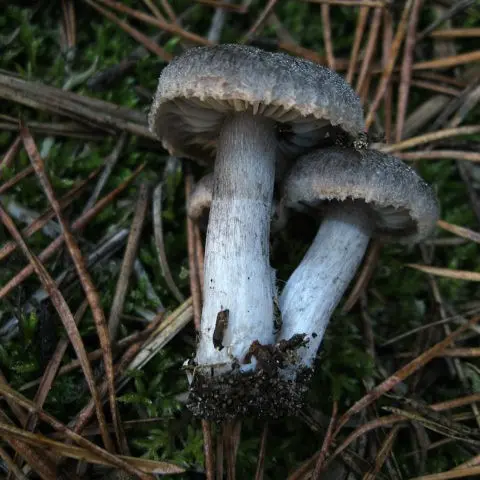
Sandy or calcareous soils are suitable for the sad rowing species, on which mushrooms grow in groups, forming rows or circles (this feature is reflected in the name). Sometimes they form “witch” circles, often hiding under fallen leaves, partially digging into the soil.
What sad rows look like
The dark gray hat of the sad row has the shape of a semicircle or a bell, and its diameter reaches 2-5 cm. Mature mushrooms come with an outstretched or flat-convex hat, it has a tubercle and tightly closed hairs that form a felt pubescence.
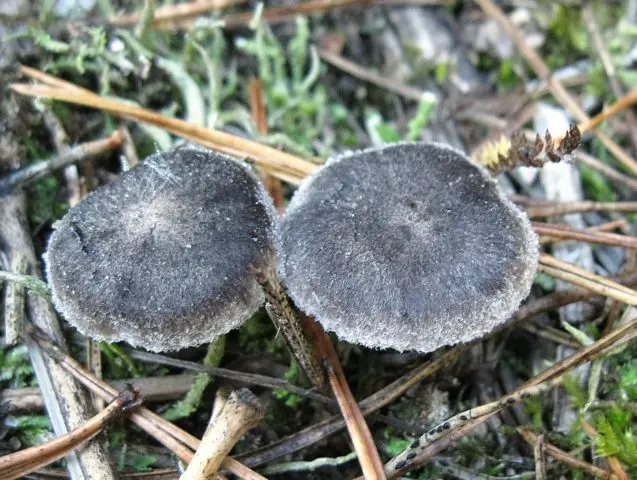
The edges of the cap are white or pale gray, sometimes with darker dots. Often the edge of the cap has cracks.
The pulp of the sad row is also white or grayish, thick. Wide plates on the reverse side of the cap are notched-grown, gray in color. On the walls of the plates of the fungus, smooth oblong or ellipsoid spores are formed, resembling a white powder.
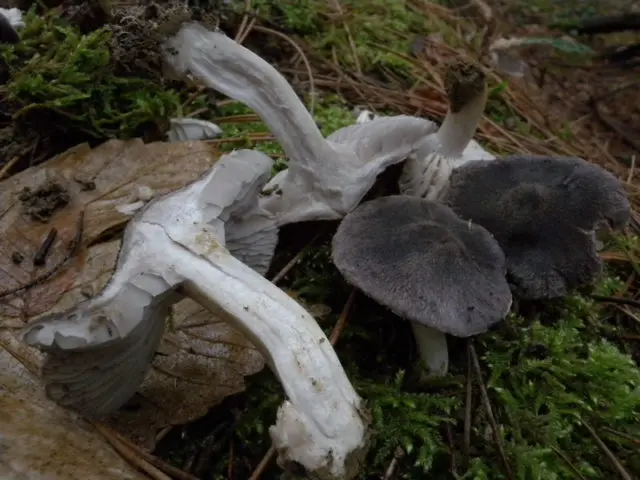
The length of the dense leg of the sad row is 3-5 cm, in diameter 4-10 mm. It may be in the form of a cylinder, painted in white, gray or fawn. On the stem of the fungus, dark gray scales are sparse or in a dense layer.
Is it possible to eat sad rows
The sad row is not eaten for food, as it contains the alkaloid muscarine, which is dangerous to human life. In this case, the dose may exceed the content of this poison in the fly agaric or in the toadstool. The alkaloid is a syrupy liquid that paralyzes the nervous system. It leads to increased contractions of the walls of the intestines, stomach, uterus, spleen and bladder. It may also increase the secretion of the pancreas, the production of bile. The opinion that a mushroom eaten by worms is edible is erroneous. They can also be found on poisonous species.
How to distinguish sad rows
You can distinguish a sad row from edible mushroom species by a gray lamellar pubescent hat with an uneven edge and a scaly dense light leg.
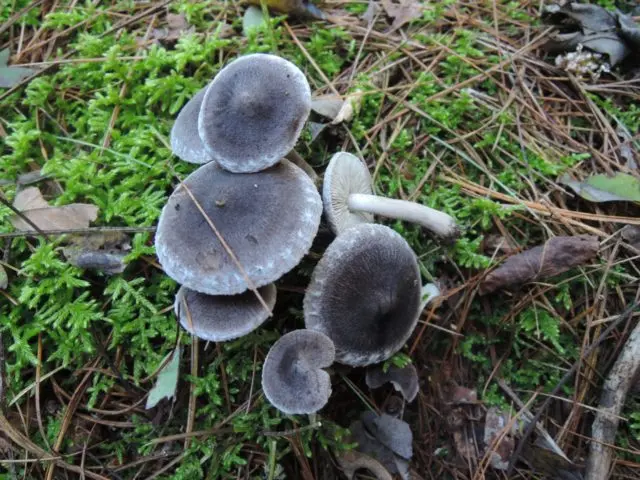
It has a characteristic floury smell. But, since sometimes the sad row does not have a pronounced aroma, you should carefully study its main external signs and refuse to collect suspicious mushrooms. The pulp of the poisonous row, reacting with oxygen, changes color when broken.
Symptoms of poisoning
The first symptoms of poisoning with a sad row appear after 1-3 hours, less often – after 3-24 hours after eating toxic mushrooms. The less time has passed before the deterioration of health, the more severe the disease can proceed.
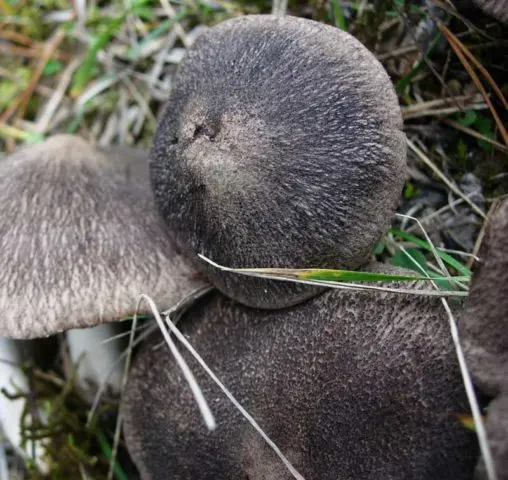
Signs of poisoning with a sad row include:
- headache;
- thirst;
- increased sweating;
- diarrhea;
- nausea and vomiting;
- drowsiness;
- low pressure;
- noise in ears;
- dizziness;
- strong salivation;
- heat;
- cutting pains in the abdomen;
- blurred vision (lack of clarity);
- disorientation;
- weakness;
- increased or slowed heartbeat;
- loss of consciousness;
- convulsions (in severe cases).
First aid for poisoning
You do not need to wait for the manifestation of all of the above symptoms. Signs of poisoning with this fungus progress very quickly. The slightest delay can lead to death. You need to seek medical help immediately. Then go to first aid:
- Rinse the stomach with a pale pink solution of potassium permanganate (a few crystals of potassium permanganate are placed in 1,5 liters of boiled water and mixed thoroughly). The drug must dissolve completely so as not to injure the mucous membranes of the esophagus and stomach. You can also use a saline solution (0,5 tsp. salt per 1 liter of water). Drink, then provoke vomiting by pressing on the root of the tongue.
- Take an adsorbent (activated carbon, Filtrum, Polysorb, Smektu, Enterosgel, Polyphepan, Sorbex, Atoxil). It will absorb toxins without harming the body.
- In the absence of diarrhea, you can take a laxative (for a more effective cleansing) or clean the intestines with an enema. Castor oil is used as a laxative (1 tbsp.)
- After taking the drugs, rest and bed rest are recommended. It is advisable to stay warm, apply heating pads to the arms and legs.
- Take as much water as possible. Herbal decoctions, strong black tea with sugar will help.
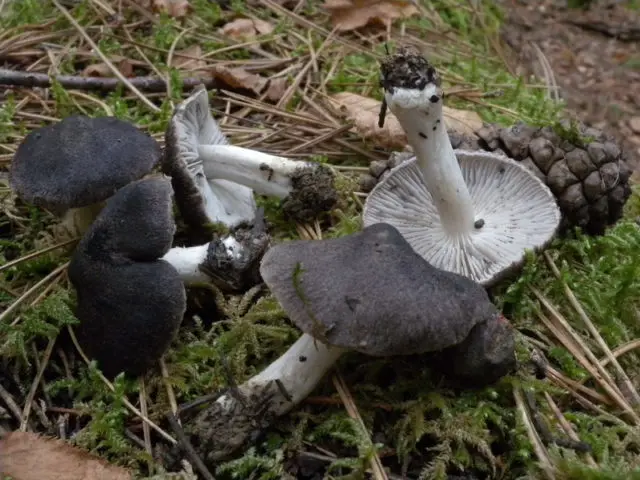
In further treatment after a medical examination, specialists conduct detoxification therapy with medications, prescribe a diet and take vitamins to strengthen immunity. If internal organs are damaged (renal failure, disruption of the functioning of the cardiovascular system), measures are taken to restore their performance.
Conclusion
In Our Country, the sad rowing species is not very common, and information about it is insufficient. Outwardly, this mushroom may be similar to some edible tricholomas. Therefore, one should be careful about the collected rows and carefully select them for eating.









